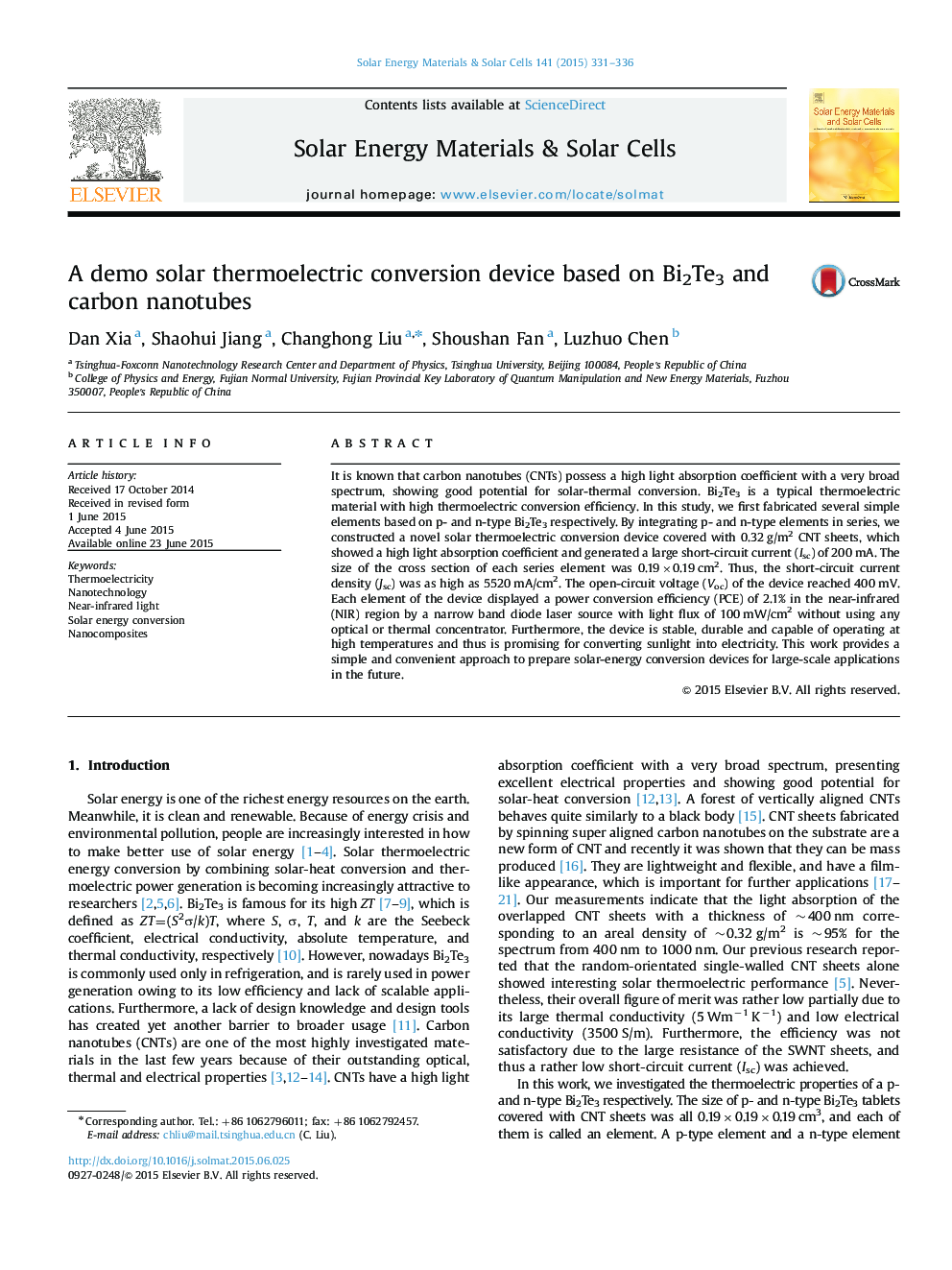| Article ID | Journal | Published Year | Pages | File Type |
|---|---|---|---|---|
| 77757 | Solar Energy Materials and Solar Cells | 2015 | 6 Pages |
•The CNTs and Bi2Te3 composites are investigated for photoelectric conversion.•The integrated device composed of hundreds of units is fabricated.•CNT sheets promote light absorption of the integrated device.•The device achieves a high voltage, current, and power conversion efficiency.
It is known that carbon nanotubes (CNTs) possess a high light absorption coefficient with a very broad spectrum, showing good potential for solar-thermal conversion. Bi2Te3 is a typical thermoelectric material with high thermoelectric conversion efficiency. In this study, we first fabricated several simple elements based on p- and n-type Bi2Te3 respectively. By integrating p- and n-type elements in series, we constructed a novel solar thermoelectric conversion device covered with 0.32 g/m2 CNT sheets, which showed a high light absorption coefficient and generated a large short-circuit current (Isc) of 200 mA. The size of the cross section of each series element was 0.19×0.19 cm2. Thus, the short-circuit current density (Jsc) was as high as 5520 mA/cm2. The open-circuit voltage (Voc) of the device reached 400 mV. Each element of the device displayed a power conversion efficiency (PCE) of 2.1% in the near-infrared (NIR) region by a narrow band diode laser source with light flux of 100 mW/cm2 without using any optical or thermal concentrator. Furthermore, the device is stable, durable and capable of operating at high temperatures and thus is promising for converting sunlight into electricity. This work provides a simple and convenient approach to prepare solar-energy conversion devices for large-scale applications in the future.
Graphical abstractFigure optionsDownload full-size imageDownload as PowerPoint slide
